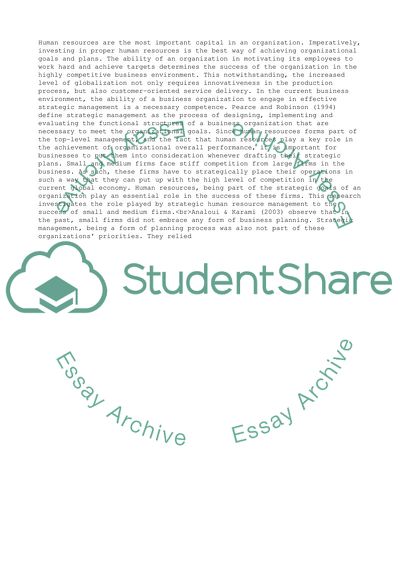Cite this document
(The Role of Strategic Human Resource Management in small sized Firms Research Paper, n.d.)
The Role of Strategic Human Resource Management in small sized Firms Research Paper. https://studentshare.org/human-resources/1807533-the-role-of-strategic-human-resource-management-in-small-sized-firms-research
The Role of Strategic Human Resource Management in small sized Firms Research Paper. https://studentshare.org/human-resources/1807533-the-role-of-strategic-human-resource-management-in-small-sized-firms-research
(The Role of Strategic Human Resource Management in Small Sized Firms Research Paper)
The Role of Strategic Human Resource Management in Small Sized Firms Research Paper. https://studentshare.org/human-resources/1807533-the-role-of-strategic-human-resource-management-in-small-sized-firms-research.
The Role of Strategic Human Resource Management in Small Sized Firms Research Paper. https://studentshare.org/human-resources/1807533-the-role-of-strategic-human-resource-management-in-small-sized-firms-research.
“The Role of Strategic Human Resource Management in Small Sized Firms Research Paper”. https://studentshare.org/human-resources/1807533-the-role-of-strategic-human-resource-management-in-small-sized-firms-research.


